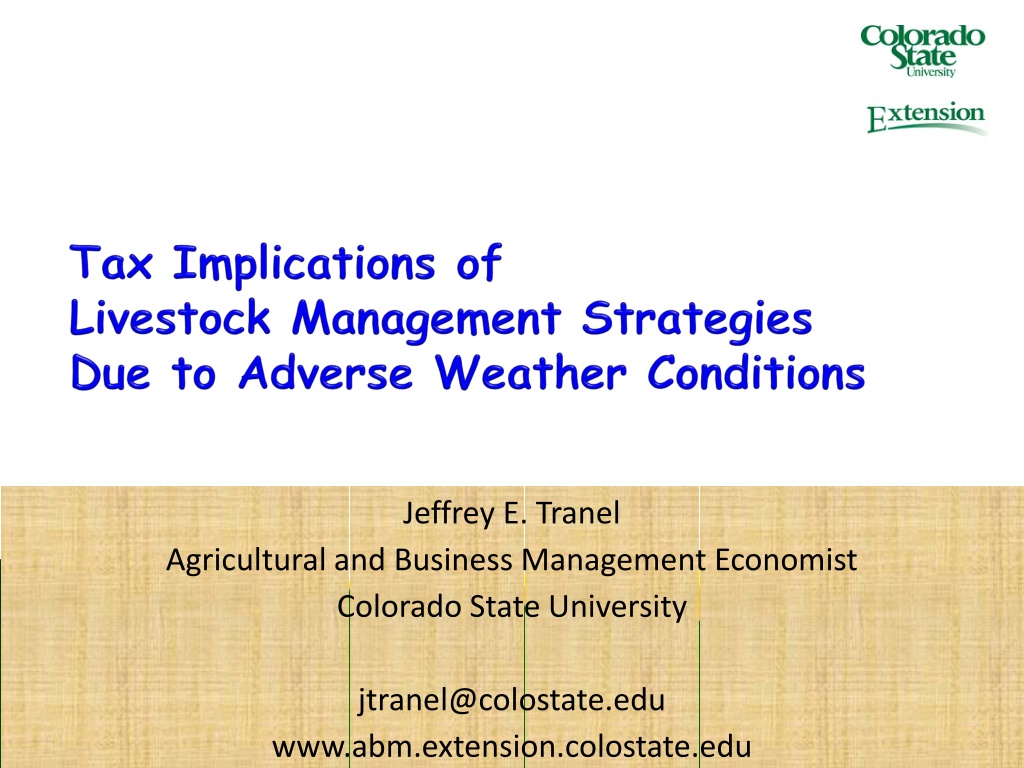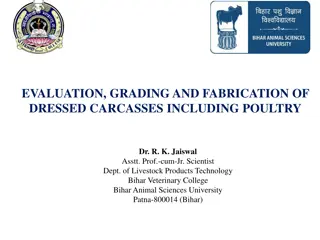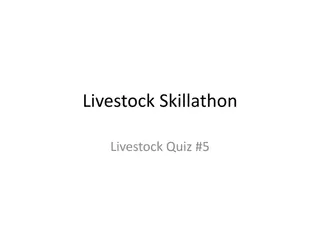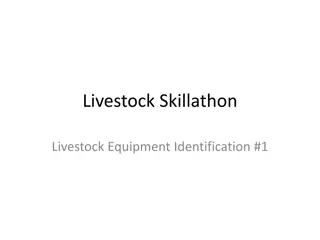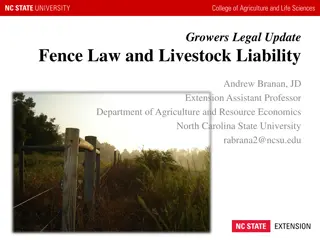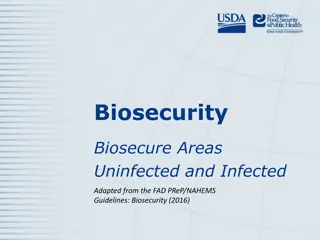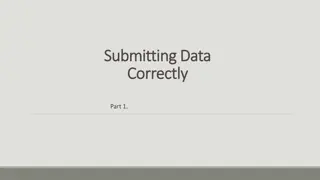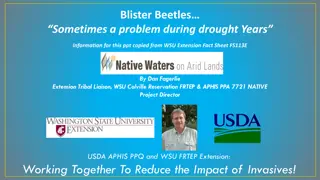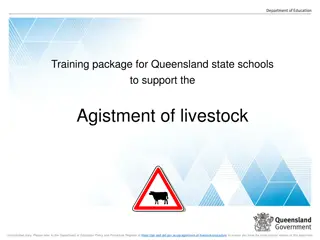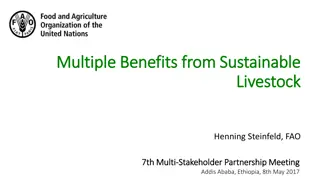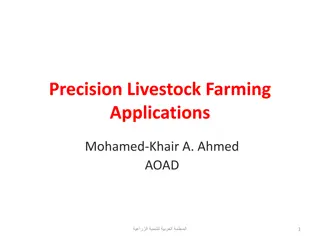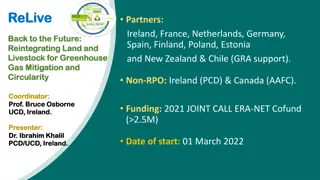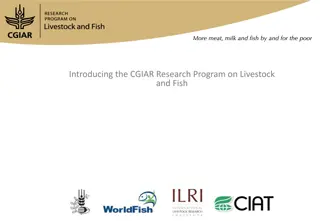Strategies for Optimizing Livestock Management: A Detailed Analysis
Explore various strategies for enhancing livestock management in agricultural operations, including options like buying supplemental feed, leasing additional pasture, and selling cattle strategically to defer recognition of gains. Learn about tax implications, replacement options, and the impact on profits. Detailed examples and insights provided by Agricultural and Business Management Economist, Jeffrey E. Tranel from Colorado State University.
Download Presentation

Please find below an Image/Link to download the presentation.
The content on the website is provided AS IS for your information and personal use only. It may not be sold, licensed, or shared on other websites without obtaining consent from the author. Download presentation by click this link. If you encounter any issues during the download, it is possible that the publisher has removed the file from their server.
E N D
Presentation Transcript
Jeffrey E. Tranel Agricultural and Business Management Economist Colorado State University jtranel@colostate.edu www.abm.extension.colostate.edu
What if you retain ownership 1. Buy supplemental feed? 2. Lease additional pasture? 3. Other? Agriculture & Business Management
Increases costs. Report on Schedule F. Reduces profits. May reduce tax liabilities income, capital gains, and self-employment. Retain cow herd (genetics, familiarity with ranch, other). Agriculture & Business Management
What if you sell 1. cows and other breeding livestock? 2. calves and other market livestock? Agriculture & Business Management
Defer recognition of gains for up to two years. Draft, breeding, or dairy animals. More animals than normally sold. Generally, average of three preceding years. Declaration of disaster area is not necessary. Must be able to show weather related conditions forced the sale of more livestock than normal. Replacement period may be extended by the IRS if the disaster area is declared eligible for federal assistance for an extended period of time. Agriculture & Business Management
Replacement Within two year. With other animals for identical purposes. Tax Basis Same as basis in livestock sold. Plus any additional investment. Agriculture & Business Management
If Not Replaced or Cost is Less than Deferred Gain Amend tax return for year of sale. May have to amend subsequent years. Returns subject to additional tax and interest. Agriculture & Business Management
Sold 40 cows due to drought conditions for $50,000. Normally sell 25 cows. Raised $18,750 Purchased $18,750 16,000 18,750 16,000 0 Gain to be Deferred Remaining Tax Basis Replacement Cost New Basis $18,750 16,000 21,000 16,000 2,250 0 20,000 0 1,250 New Basis = first line is continuation of previous depreciation computations. Second line can be depreciated using MACRS or expensed using IRC Sec. 179. Agriculture & Business Management
Making the Election: 1. Name, address, and ID number. 2. Evidence of weather-related conditions. 3. Explanation of how the sale is related to weather conditions. 4. Number and kind of livestock sold or exchanged. 5. Number of livestock of each kind that would have been sold or exchanged under normal circumstances. (generally, average of numbers sold in three preceding years) 6. Amount of gain realized on the sale or exchange. 7. Amount of income to be postponed. Agriculture & Business Management
Agriculture & Business Management
Defer Income for One Tax Year Market animals. More animals than normally sold. Taxpayer s history is used to determine normal numbers sold Normal Business Practice. Declaration of disaster area is necessary. Federal designation. Eligible to receive federal assistance. Taxpayer makes an election. Qualified farmer. Uses cash method of accounting. Agriculture & Business Management
Livestock do not have to be raised nor sold in the declared disaster area. BUT, the weather-related condition that caused an area to be declared eligible for federal assistance must have caused the premature sale of the livestock. Sales can take place before or after declaration. Agriculture & Business Management
Making the Election: 1. Name, address, and ID number. 2. Declaration that election made under IRC Section 451(g). 3. Evidence of weather-related conditions and federal disaster designation. 4. Explanation of how the sale is related to weather conditions. 5. Number and kind of livestock sold or exchanged. 6. Number of livestock of each kind that would have been sold or exchanged under normal circumstances. 7. Amount of income to be deferred. Agriculture & Business Management
Agriculture & Business Management
Before taking action! Lender Tax preparer Other After taking action! Lender Tax preparer IRS IRS Publication 225 www.RuralTax.org Agriculture & Business Management
Thank You! Thank You! Agriculture & Business Management
